Porsche 911 RSR Story from 1973 till November 14th 2020
Stuttgart. The Porsche GT Team has wrapped up the 2019/2020 season of the FIA World Endurance Championship WEC with positions one and two in the GTE-Pro category. Frenchman Kévin Estre and Michael Christensen from Denmark took up the eight-hour race on the Bahrain International Circuit from pole position and crossed the finish line in first place. Their teammates Richard Lietz (Austria) and Gianmaria Bruni (Italy) fought their way from fourth at the start to finish in second place. For the sports car manufacturer, this is the third victory out of eight WEC races with the newly developed ca. 515 hp 911 RSR. Fourteen months ago, Porsche won the season-opening round at Silverstone in Great Britain – on that occasion, Lietz/Bruni took the flag ahead of Estre/Christensen. In August, the French-Danish duo reciprocated with a victory at the Spa-Francorchamps six-hour race.
In a banner day, Porsche won both GT classes at the final round of the season: Porsche brand ambassador Jörg Bergmeister (Germany), Porsche Mobil 1 Supercup winner Larry ten Voorde (Netherlands) and Egidio Perfetti (Norway) claimed victory in the GTE-Am class for the Project 1 customer squad.
Like the two work teams in the GTE-Pro category, Porsche split the strategy of the two 911 RSR on the 5.412-kilometre Bahrain International Circuit, which is known for its particularly abrasive asphalt. Estre and Christensen tackled the qualifying each with new Michelin tyres and secured pole position. Lietz and Bruni, however, shared one set of new tyres. Taking up the race from fourth place, they were the fastest of the three vehicles who had implemented the same tactic. Their advantage: In the race, they had an additional set of fresh tyres at their disposal.
Accordingly, tyre strategy proved paramount at the eight-hour race. The race began with hot air and track temperatures in the daytime and ran into the cooler night. Start driver Estre immediately took the lead. The No. 92 Porsche only relinquished this position once: coming in for the first refuelling stop, the sister car only had to switch out two tyres, making the pit stop shorter. The third pit stop, which was brought forward as a result of a full course yellow situation, did not run as expected for the No. 91 car: when the race resumed quicker than anticipated, the hoped-for advantage evaporated. When the safety car was deployed for its one and only outing at the halfway point of the relatively incident-free season finale, the 911 RSR driven by Lietz und Bruni caught up with the leaders. On the cooling asphalt, the pair moved into second place behind Estre and Christensen with a good three hours to go and ultimately rounded off the one-two result for Porsche.
Two Porsche teams also climbed the podium in the GTE-Am class, in which five 2017-spec 911 RSR competed. Jörg Bergmeister, Larry ten Voorde and Egidio Perfetti claimed victory. Porsche Junior Jaxon Evans (New Zealand), Germany’s Marco Holzer and Khaled Al Qubaisi (United Arab Emirates) planted the 911 RSR fielded by Dempsey Proton Racing on third place in their class. In addition, positions five, six and seven in the GTE-Am class went to Porsche customer teams. Comments on the race
Race result
|
|||||||||||||||||||||||||||||||||||||||||||||||||||||||||||||||||||||||||||||||||||||||||||||||||||||
|---|---|---|---|---|---|---|---|---|---|---|---|---|---|---|---|---|---|---|---|---|---|---|---|---|---|---|---|---|---|---|---|---|---|---|---|---|---|---|---|---|---|---|---|---|---|---|---|---|---|---|---|---|---|---|---|---|---|---|---|---|---|---|---|---|---|---|---|---|---|---|---|---|---|---|---|---|---|---|---|---|---|---|---|---|---|---|---|---|---|---|---|---|---|---|---|---|---|---|---|---|---|
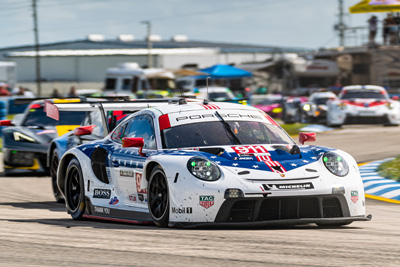 |
 |
November 14th 2020- Last Round of IMSA Weathertech Championship at Sebring 12 Hours |
|
|---|---|
Stuttgart. The Porsche GT Team has achieved maximum success at its final outing in the GTLM class of the IMSA WeatherTech SportsCar Championship. In the highly dramatic twelve-hour race in Sebring, Britain’s Nick Tandy, Frédéric Makowiecki from France and Earl Bamber scored a victory with the No. 911 Porsche 911 RSR. The New Zealander celebrated twice after also clinching second place in the No. 912 car, which he shared with his teammates Laurens Vanthoor from Belgium and Neel Jani from Switzerland. After contesting a total of 75 races since 2014, the North American Porsche works team has achieved 21 wins and 56 podium results. In the GTD class, the customer team Wright Motorsports took first place with the Porsche 911 GT3 R
 |
November 14th 2020-Sebring 12 Hours -The two works-run Porsche 911 RSR finished in special liveries to bid farewell to the GTLM-class of the IMSA WeatherTech SportsCar Championship. |
|---|
Pascal Zurlinden (Director Factory Motorsport): “That’s just crazy. There’s no better way to wrap up a factory programme. At the end of our IMSA campaign, we secured three wins in a row at Road Atlanta, Laguna Seca and now Sebring. That’s phenomenal. Congratulations as well to our customer squad Wright Motorsports. And let’s not forget our one-two success today at the WEC in Bahrain. There, too, we managed to celebrate another class win with a customer team. It was an incredibly successful day for Porsche Motorsport.”
In an eventful twelve-hour race in Florida, the decision in the GTLM class went down to the wire to the final 15 minutes of the race. After the last of nine safety car phases, Tandy had manoeuvred himself into the slipstream of the leading BMW. Shortly after the last restart, the frontrunner sustained tyre damage in the aftermath of a collision between several GTD vehicles. Tandy snatched the lead in his ca. 515 hp Porsche 911 RSR and held tight to his front spot to the flag. For the British racer and his teammate Makowiecki, this was the third victory in a row at the esteemed Sebring endurance classic. Bamber, who drove stints in both works cars at the season finale of the North American sports car racing series, crossed the finish line in second place, just 9.025 seconds behind. The Porsche factory squad concluded the last season with the 911 RSR in the GTLM class ranking third in the championship.
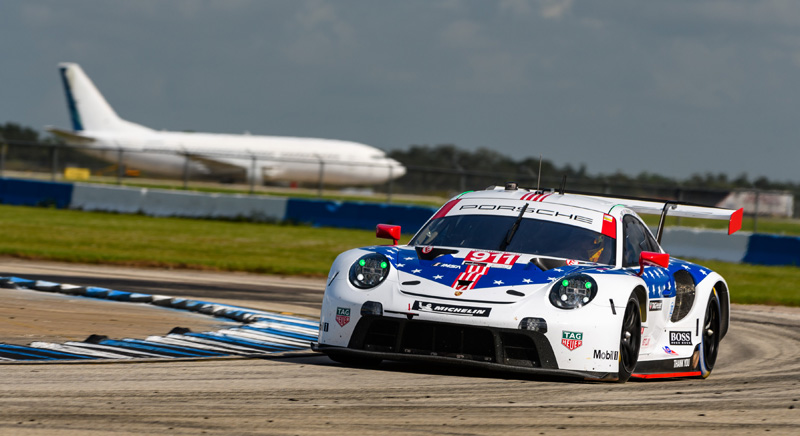 |
| November 14th 2020-Sebring 12 Hours-N°911 GTLM Class winning Porsche 911 RSR |
|---|
Huge celebrations as well in the pits of the Porsche customer team Wright Motorsports. Works driver Patrick Long, his American compatriot Ryan Hardwick and Belgium’s Jan Heylen brought the 500+hp 911 GT3 R with the starting number 16 over the finish line in first place. Despite the lack of grip at times and an unplanned change of the brakes, the strong trio maintained their composure in the fierce competition of the GTD class. The customer team from the US state of Ohio wrapped up the championship in second place, just two points shy of the title.
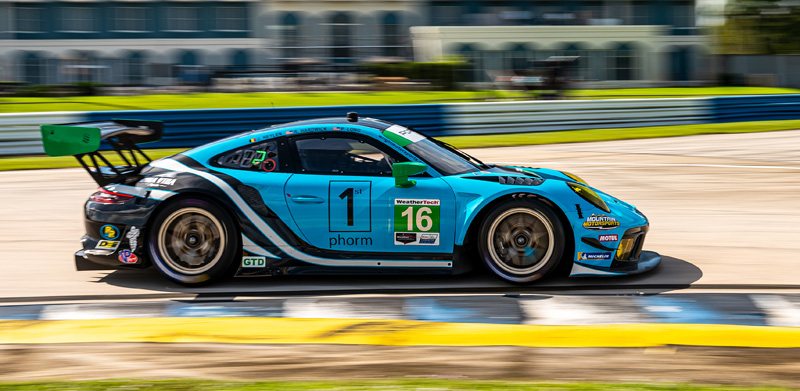 |
| November 14th 2020-Sebring 12 Hours- GTD Class winning Porsche GT3 R |
|---|
Shortly before the race, the works team bid the loyal fans of the Porsche 911 RSR farewell with a special spectacle. Five GTLM vehicles of the 2016, 2018, 2019 and 2020 generations turned three parade laps on the legendary circuit in Florida decked out in the much-loved liveries of Brumos, Mobil1, Coca-Cola and the special “Thank You” farewell wrap. To the delight of spectators, the drivers Laurens Vanthoor, Frédéric Makowiecki, Patrick Long, Jonathan Benett and Cooper MacNeil performed wheel spins and let the engines roar. On Wednesday evening, Pascal Zurlinden (Director Factory Motorsport) and Head of Operations Steffen Höllwarth thanked all employees of the Core Autosport squad at an emotional team event.
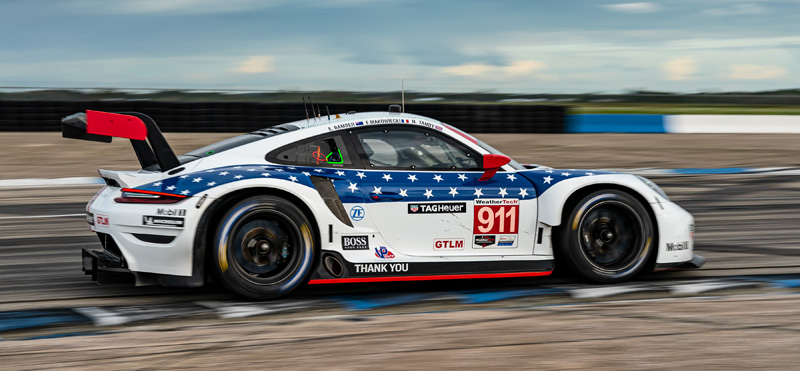 |
| November 14th 2020-Sebring 12 Hours- GTLM Class winning Porsche 911 RSR |
|---|
Comments on the race
Steffen Höllwarth (Head of Operations IMSA Championship): “I’m incredibly proud of the team. This weekend wasn’t easy for us. Because of the upcoming farewell, the mood was different than usual, but everyone coped just fine. We weren’t the fastest in the field, but we were the ones who made the least mistakes – and that’s how things like this happen. Suddenly you find yourself at the front. After three straight wins at Sebring, I’d say that this track has become our turf. Now it’s time to celebrate!”
 |
| November 14th 2020-Sebring 12 Hours-GTLM Class winning Porsche 911 RSR |
Result GTLM class
1. Tandy/Makowiecki/Bamber (GB/F/NZ), Porsche 911 RSR #911, 332 laps
2. Vanthoor/Bamber/Jani (B/NZ/CH), Porsche 911 RSR #912, 332 laps
3. Krohn/Edwards/Farfus (FIN/USA/BR), BMW M8 GTE #24, 331 laps
4. Spengler/De Phillippi/Herta (CDN/USA/USA), BMW M8 GTE #25, 330 laps
5. Garcia/Taylor/Catsburg (E/USA/NL), Corvette C8.R #3, 323 laps
6. Gavin/Milner/Fässler (GB/USA/CH), Corvette C8.R #4, 293 laps
Result GTD class
1. Long/Hardwick/Heylen (USA/USA/B), Porsche 911 GT3 R #16, 319 laps
2. James/de Angelis/Turner (USA/CDN/GB), Aston Martin Vantage, 319 laps
3. Farnbacher/McMurry/Michimi (D/USA/J), Acura NSX GT3, 319 laps
 |
 |
The story of Porsche's RSR models from 1973 |
|
|---|---|
Stuttgart. When a Porsche model receives the designation RSR, there is no doubt: this car is made for racing, maximum performance on the racetracks, and the best synthesis of performance, efficiency and driveability. For the last 47 years, the nine-eleven, developed specifically for motor racing bearing the RSR badge on the rear, has competed for victories and titles at the world’s greatest competitions – with huge success. The first racer of this series, the 911 Carrera RSR 2.8, celebrated an impeccable debut in 1973. The Americans Hurley Haywood and Peter Gregg clinched overall victory at the 24 Hours of Daytona. That same year, the version powered by a three-litre boxer engine scored a convincing class win at the 24 Hours of Le Mans.
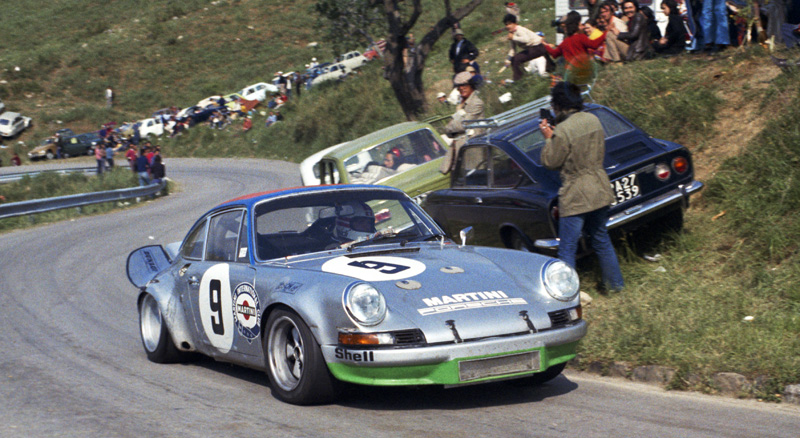 |
| 1973 Targa Florio Porsche 911 Carrera RSR 3rd with Leo Kinunen and Claude Haldi at the wheel while N°8 driven by Herbert Muller and Gijs van Lennep was winner. |
|---|
The progenitor of all RSR models from Porsche is the 911 Carrera RSR 2.8, which was created for the 1973 season based on the Carrera RS 2.7 as a prototype to comply with the FIA Group 4 regulations. Compared to the already lightweight production model, the new features were modest. The rear wheels grew 50 millimetres in width, the capacity of the flat-six engine was enlarged through bigger bores, and the so-called “ducktail” on the engine lid gradually developed into a real rear wing. During its first racing season, Porsche launched a new version powered by a three-litre flat engine. This was followed by a 2.1-litre turbo. In 1974, the turbocharged RSR was the first turbo vehicle to write history at Le Mans. However, the large-capacity normally aspirated unit is still the preferred aggregate in GT racing today. The new Porsche 911 RSR (2019 model) is powered by a 4.2-litre six-cylinder unit – the largest boxer engine ever fitted in a racing 911 ex-works. In addition to sheer performance, efficiency, reliability and driveability have always been the development focus.
“I often drive historic 911 racing cars from Porsche. What fascinates me every time is that they all convey that typical 911 feeling – regardless of their vintage. The basic characteristics have been retained,” explains works driver Patrick Long (USA). The American is passionate about the Porsche marque. In his home of Los Angeles, Long regularly organises meetings for classic Porsches under the motto “Luftgekühlt”. “The first RSR from 1973 is a stunner,” says the Californian. “The air-cooled engine is incredibly responsive, flames often shoot from the exhaust, the feedback from the chassis is precise, and the braking performance is simply astounding. Of course, everything is significantly better with the latest version of the Porsche 911 RSR, but it becomes apparent to every driver at the wheel of a classic model that the RSR has always been an outstanding car. The 1973 vehicle was made to be driven fast.”
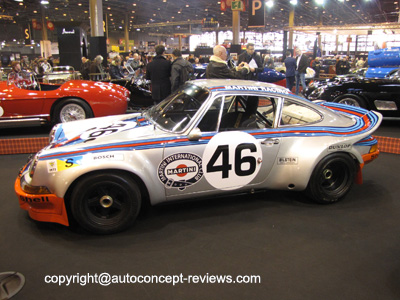 |
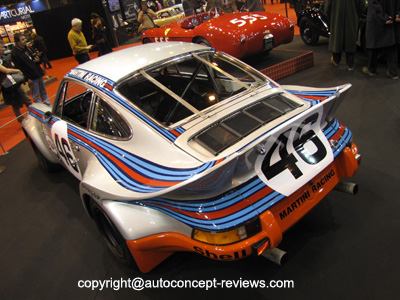 |
1973 Porsche 911 3.0 Litre RSR prototype exhibited by Fiskens at 2015 Retromobile in Paris see car review Porsche 911 3.0 L RSR Prototype 1973 |
|
|---|---|
Engine development: The boxer packs a real punch
The RSR prototypes with 2.8-litre engines from 1973 produced 290 hp (213 kW), the three-litre from the following year put out 330 hp (243 kW). The production aggregate of the Carrera RS series received only minor modifications. The bore was 92 millimetres; the stroke of 70.4 millimetres remained unchanged compared to the road-legal vehicle. At 10.3:1, the compression was rather moderate by today’s standards. The six-cylinder normally-aspirated engine in the rear generated 294 Nm of torque. In the racing version, the oil cooler was installed at the front of the vehicle.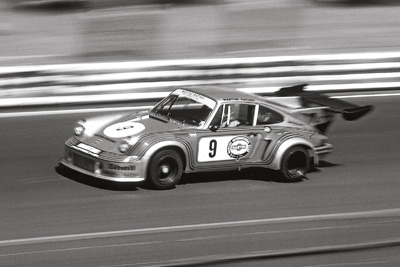 |
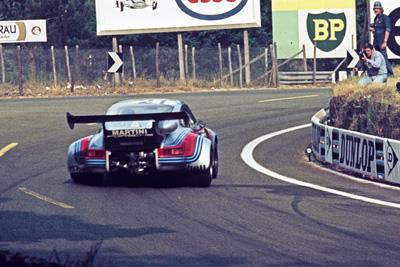 |
| 1974 Porsche 911 Carrera RSR Turbo 2nd overall at Le Mans 24 Hours and 6th at Nurburgring 1000 km | |
|---|---|
In the new Porsche 911 RSR, which is based on the high-performance 911 GT3 RS* road-legal sports car, the engine was mounted in front of the rear axle for the sake of weight distribution. In race trim, the latest 4.2-litre boxer in the RSR generates around 515 hp (378 kW), tamed by the regulatory requirements (Balance of Performance) when campaigned in the FIA WEC and the North American IMSA series. The torque has more than doubled compared to the Porsche 911 Carrera RSR 2.8 – with a significant improvement to the efficiency. The “Ur-RSR” featured a type 915 standard manual gearbox with five gears. Today, the power is activated by a drive-by-wire system and transmitted to the drive shafts via a sequential six-speed constant-mesh box. Gears can be shifted via a rocker switch with a power interruption of just milliseconds. “I think that is the biggest difference between then and now is precisely in this area,” explains works driver Romain Dumas (France). “In the past, when shifting down, you had to put your left foot on the clutch and your right foot on the brake and accelerator at the same time. Nothing worked without double-declutching. It was like a tap dance. What’s more, the right hand had to be on the gear lever. It was a very challenging. These days, it’s easier as a driver thanks to technical developments in almost all areas – you can drive at the limit much more consistently with the new Porsche 911 RSR.”
 |
| 2007 Porsche 911 GT3 RSR |
Chassis development: Everything used to be lighter
In developing the 911 Carrera RSR 2.8 for the 1973 season, the Porsche engineers scored a real coup. Despite the integration of many safety features, including a steel roll cage and the installation of a large 120-litre fuel tank, the racing prototype still only tipped the scales at around 900 kilograms. This meant that the racer was a lightweight like the production model Carrera RS. The engineers achieved this goal because they were already using cutting-edge materials in the 1970s. Doors, front lids and side windows were made of plastic. The first RSR was not only light, but it was also slim and short. The latest generation is around 50 centimetres wider, 40 centimetres longer and with a 30-centimetre-longer wheelbase. Asterix became Obelix – but without forfeiting its nimbleness and punch. On the contrary: the extensive setting options on the kinematics of the Porsche 911 RSR-19 ensure the best possible adjustments for all racetrack characteristics and conditions. Moreover, the optimised weight distribution with the engine mounted in front of the rear axle yields noticeable advantages.
 |
| 2011 Porsche 911 GT3 RSR |
“There’s always a lot of movement in the Porsche 911 Carrera RSR 2.8 from 1973. We no longer get those enormous rolling motions in the new cars, nor do we get hefty understeer. But such things are great fun,” says Richard Lietz. The experienced works driver from Austria adds: “When braking and turning in, you have to wait for the perfect moment during the load change to put your foot down again. If you don’t get it right, it gets tricky; a huge challenge for us drivers. The first RSR is my all-time favourite. It’s wonderful to drive this car at the limit. Such a car asks to be driven fast. With all RSR models, this is an approach appropriate to the species, so to speak.”
Le Mans lap times: 30 seconds faster despite the shortened straights
The technical advances of Porsche’s RSR models are clearly evident on the stopwatch. In 1973, Gijs van Lennep (Netherlands) and Herbert Müller (Switzerland) drove to a class win and fourth place overall at the 24 Hours of Le Mans clocking an average lap time of 4:20 minutes. The qualifying times were around five seconds faster. The then 13.640-kilometre Circuit des 24 Heures still had no chicanes on the legendary Mulsanne straight. Nowadays, on their long run from the Tertre-Rouge corner to the Mulsanne right-hander, vehicles are reined in twice by chicanes. A Le Mans lap today is only 14 metres shorter than in 1973, but the lap times are very different. In 2018, factory driver Gianmaria Bruni (Italy) set a new qualifying record for GTE vehicles in 3:47.504 minutes. With favourable weather and track conditions, the Porsche 911 RSR of the 2019 model year will very likely be just as fast at its planned Le Mans debut in September 2020.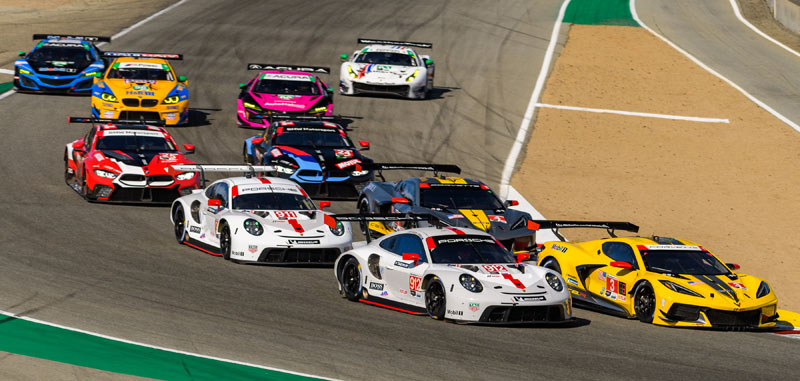 |
| 2020 Nov 02 Laguna Seca :Bamber and Vanthoor driving Porsche 911 RSR (N°912) finished 1st in GTLM Class and Tandy and Makowieki (N°911) came in fourth position behind the two Corvette C8R |
P.Damiens source Porsche Media Archives
wallpapers Porsche 911 RSR Story from 1973 till November 14th 2020 (click on image to enlarge)
| Wallpapers November 14th 2020 - One-Two Class Win WEC Bahrein 8 Hours and IMSA Sebring 12 Hours | |||
 |
 |
 |
 |
.jpg) |
 |
.jpg) |
 |
| Wallpapers Porsche RSR Story from 1973 | |||
 |
 |
 |
 |
 |
 |
 |
 |
.jpg) |
.jpg) |
 |
.jpg) |
 |
 |
||
Related Articles
| Porsche GT3 RSR (997) at Le Mans 2007 Test Day |  |
| Porsche 996 GT3 RSR 2006 |  |
 |
|
| Porsche 911 RSR 2013-2016 |  |
 |









.jpg)
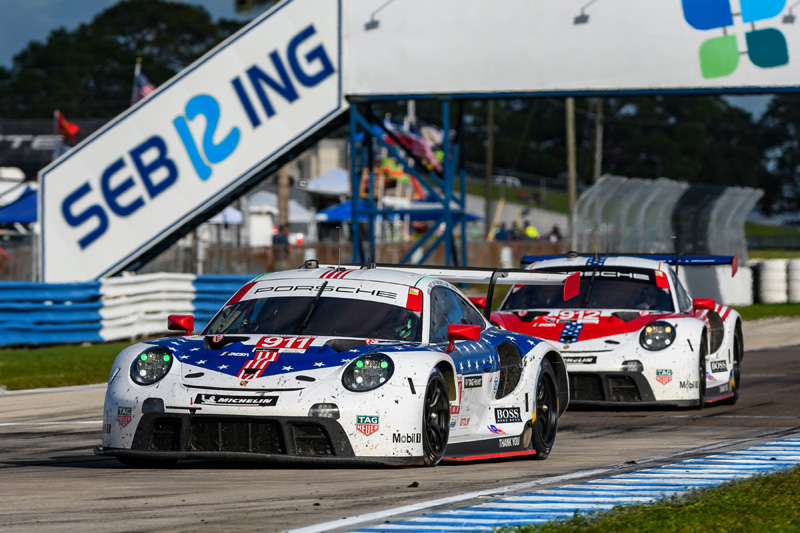
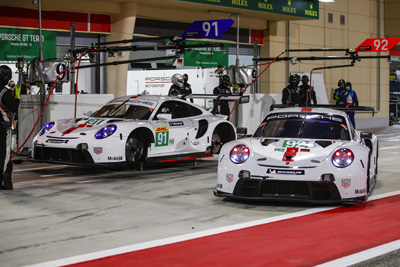

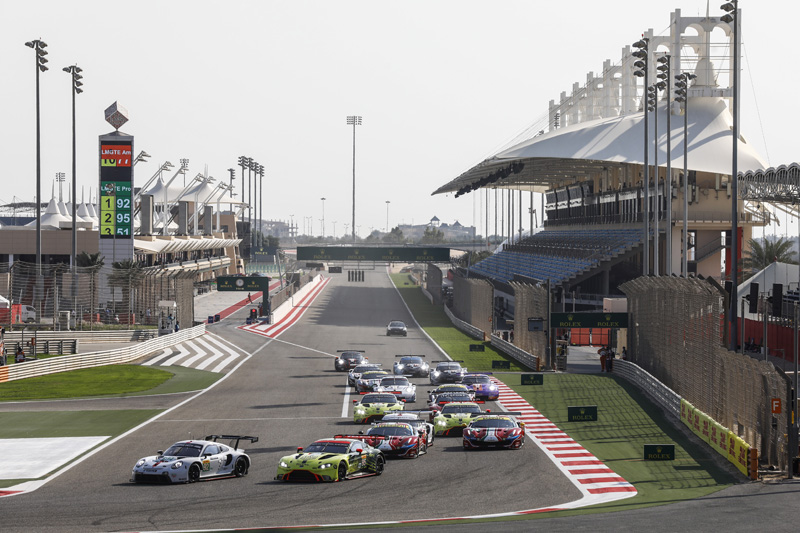
.jpg)
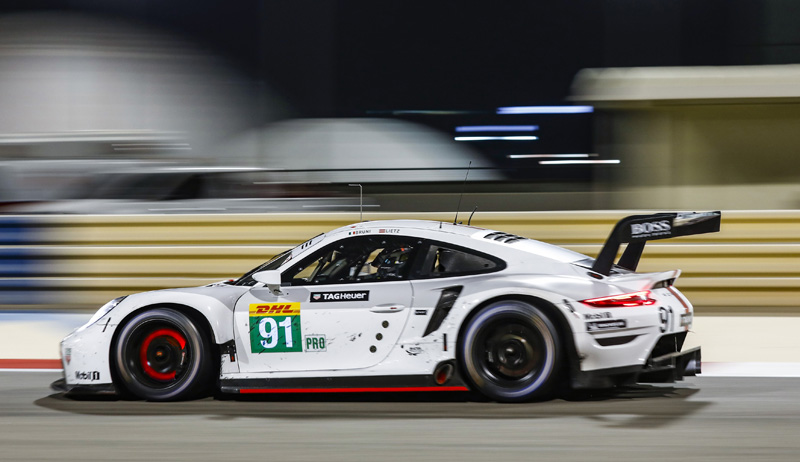
.jpg)
